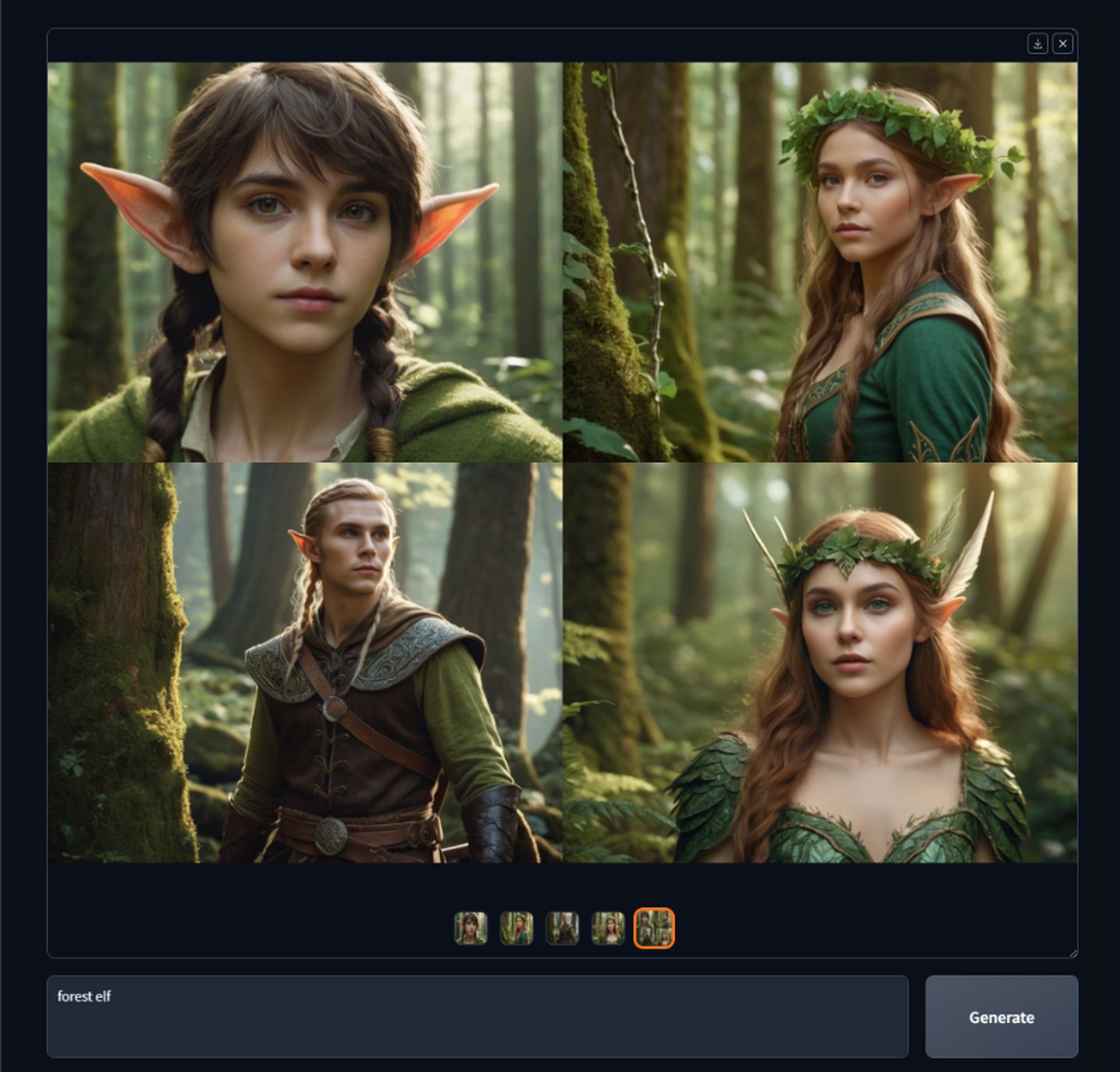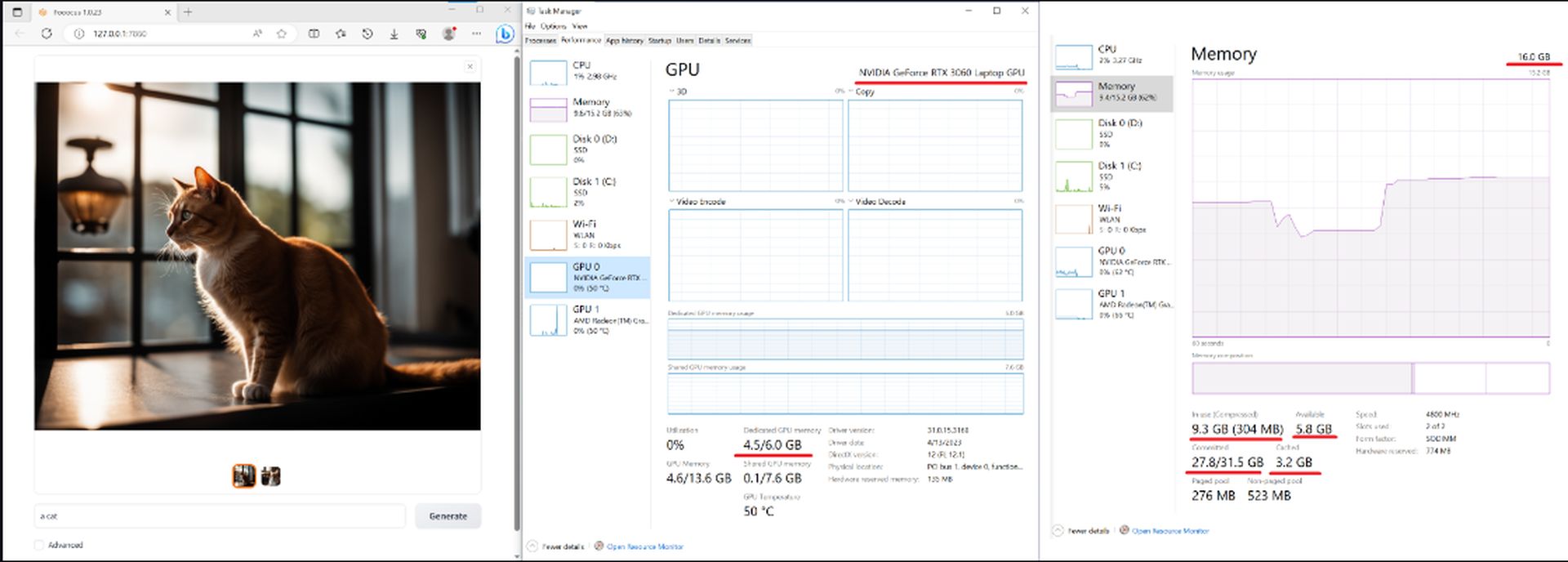Fooocus breathes new life into AI-powered image generation, making it very easy to use Stable Diffusion models.
Fooocus is an image generation software that simplifies the process of creating stunning images using Stable Diffusion. Unlike other SD interfaces like ComfyUI, Fooocus requires just a single prompt, making it easy for even beginners to get started, just as easy as how Midjourney works.
”Fooocus is an image generating software (based on Gradio).
Fooocus is a rethinking of Stable Diffusion and Midjourney’s designs:
- Learned from Stable Diffusion, the software is offline, open source, and free
- Learned from Midjourney, the manual tweaking is not needed, and users only need to focus on the prompts and images
Fooocus has included and automated lots of inner optimizations and quality improvements. Users can forget all those difficult technical parameters, and just enjoy the interaction between human and computer to “explore new mediums of thought and expanding the imaginative powers of the human species”.

What is Fooocus?
One of the standout features of Fooocus is its user-friendly single-prompt interface. Unlike other image generation tools that require multiple inputs or complex configurations, Fooocus streamlines the process by requiring only one prompt from the user. This makes it accessible to users of all skill levels, whether they’re seasoned professionals or beginners who are new to image generation. With Fooocus, you can easily generate high-quality images without having to spend hours learning complicated interfaces or configuring countless parameters.
Another significant advantage of Fooocus is its optimized default settings. The software comes pre-configured with carefully tuned default settings specifically designed for SDXL models. These defaults ensure that your images turn out consistently excellent, regardless of your level of expertise. You can rely on Fooocus to produce professional-grade results without having to spend time tweaking and adjusting various settings. Of course, if you do want to fine-tune your settings, Fooocus also offers a range of customization options to help you achieve your desired look.
In addition to its ease of use and excellent results, Fooocus also boasts reduced GPU requirements. While 12GB of VRAM is recommended for a smoother experience, the software can still operate efficiently on GPUs with as little as 8GB of VRAM. This means that you don’t need an expensive, high-end graphics card to run Fooocus – another advantage that sets it apart from other image generation tools on the market.
Finally, installation is straightforward and hassle-free. Simply download the standalone installer, extract the files, and execute the “run.bat” file to get started. There’s no need to wrestle with complicated setup processes or dependencies and it is ready to use right out of the box.
With these key features in mind, it’s clear why Fooocus is such a powerful and popular tool for image generation. Whether you’re looking to create stunning visuals for personal projects or professional applications, it has everything you need to bring your creative vision to life.
TLD;DR:
- User-friendly single-prompt interface
- Optimized default settings for SDXL models
- Reduced GPU requirements – can operate on GPUs with as little as 8GB of VRAM
- Easy installation
What makes Fooocus different?
One of its key strengths is its ability to incorporate various hidden features that significantly enhance its image generation capabilities.
One such feature is GPT2-based prompt expansion, which enables Fooocus to dynamically adjust the style of the generated image. This technique allows the software to explore different stylistic approaches and create images that are both visually appealing and contextually appropriate.
Another important feature of the AI model is its native refiner swap mechanism. This feature ensures seamless image refinement by employing a native refiner swap within a single k-sampler. The result is a more efficient and effective image generation process that produces high-quality images with minimal noise.
In addition, it utilizes negative ADM guidance to address potential issues with XL Base’s highest resolution level. This feature helps to mitigate the risk of overfitting and ensure that the generated images are both detailed and realistic.
To further enhance the quality of the generated images, Fooocus also employs self-attention guidance. This carefully tuned variation of Self-Attention Guidance helps to prevent overly smooth or plastic-looking images, ensuring that the resulting images have a natural, lifelike quality.
Finally, it has added a new “cinematic-default” style template to its library. This template provides users with a pre-defined set of parameters that can be used to generate images with a cinematic look and feel. With this feature, users can easily create professional-grade images that are perfect for a variety of applications, including advertising, film, and television.

How to install Fooocus?
Although the AI model provides great convenience in use, as you know, it is not easy to install Stable Diffusion models. Let’s start if you are ready.
Download Fooocus
Click here to download Fooocus for Windows. After the download is complete, extract the downloaded file.
Run Fooocus
Open the extracted folder and run the “run.bat” file.
Install models
The first time you launch Fooocus, it will automatically download the necessary models. This process may take some time depending on your internet speed.
Verify installation
Once the models have been downloaded, you can start using the model. To create an image, simply enter a prompt in the text box and click the “Generate” button.
If you already have the models downloaded, you can copy them to the following folders to speed up installation:
- Fooocus\models\checkpoints
- Fooocus\models\inpaint
If you are using an AMD GPU, you will need to install the torch-directml package. To do this, open the “run.bat” file in a text editor and add the following lines to the end of the file:
.\python_embeded\python.exe -m pip uninstall torch torchvision torchaudio torchtext functorch xformers -y
.\python_embeded\python.exe -m pip install torch-directml
.\python_embeded\python.exe -s Fooocus\entry_with_update.py –directml
pause
If you are using a Mac, you can install Fooocus using the following steps:
- Install the conda package manager and pytorch nightly. Read the Accelerated PyTorch training on Mac Apple Developer guide for instructions.
- Make sure pytorch recognizes your MPS device
- Open the macOS Terminal app and clone this repository with git clone https://github.com/lllyasviel/Fooocus.git
- Change to the new Fooocus directory, cd Fooocus
- Create a new conda environment, conda env create -f environment.yaml
- Activate your new conda environment, conda activate fooocus
- Install the packages required by Fooocus, pip install -r requirements_versions.txt
- Launch it by running python entry_with_update.py. (Some Mac M2 users may need python entry_with_update.py –enable-smart-memory to speed up model loading/unloading)
- The first time you run it, it will automatically download the Stable Diffusion SDXL models and will take a significant time, depending on your internet connection
- Use python entry_with_update.py –preset anime or python entry_with_update.py –preset realistic for Fooocus Anime/Realistic Edition
The AI generated art craze
The rise of AI-generated art has been nothing short of phenomenal in recent years. From creating stunning visuals for personal projects to producing breathtaking images for professional applications, AI-powered tools like DALL-E 2, Midjourney, and Artbreeder have revolutionized the way art is created and consumed. But what exactly is driving this surge in AI-generated art?
At the heart of this craze lies the remarkable ability of AI algorithms to create art that is both aesthetically pleasing and conceptually intriguing. These algorithms, trained on vast datasets of images and text, can generate original works of art that reflect human creativity and artistic expression.

Whether it’s a photorealistic landscape, an abstract painting, or a fantastical creature, AI can produce art that rivals the work of human artists.
AI-generated art has also democratized the art creation process, making it accessible to anyone with a computer and an internet connection. This has opened up new avenues for creativity and self-expression, allowing individuals without formal art training to create and share their own unique artworks.
The rise of NFTs and digital art
The surge in popularity of non-fungible tokens (NFTs) has further fueled the AI-generated art craze. NFTs have created a new market for digital art, enabling artists to monetize their work and reach a wider audience. AI-generated art has found a particularly strong foothold in the NFT space, with many collectors recognizing the value and uniqueness of these AI-created artworks.
A transformative force
The emergence of AI-generated art has sparked discussions about the future of art itself. Some see AI as a tool that can augment and enhance human creativity, while others believe that it could eventually lead to the creation of art that surpasses human capabilities. Regardless of its ultimate impact, AI is undoubtedly transforming the art world, pushing the limits of what is possible and challenging our traditional notions of art and creativity.
Featured image credit: Robert Katzki/Unsplash.





